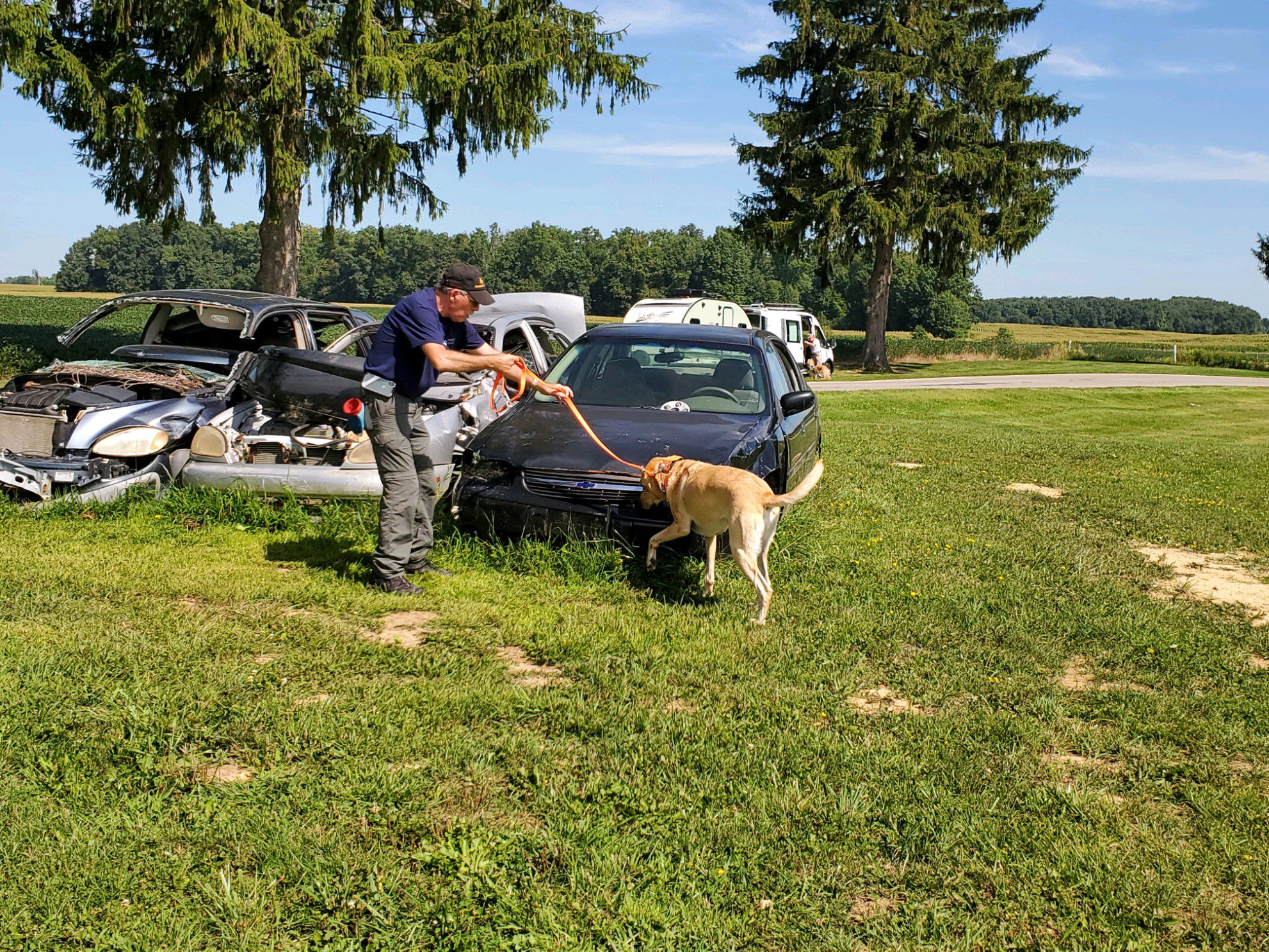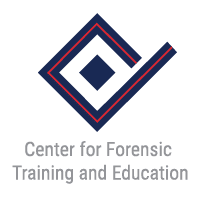It’s All About YOU
A few weeks ago I came to you live on Facebook from the hot and humid woods of Illinois where I was a decoy for my teammates during their trailing workshop.
Don’t get me wrong, I love to train! Especially when I get to work my own dog.
But there are a lot of benefits to not being at the end of the leash all the time. After over 17 years in K9 SAR, I can honestly say that the ability to step back, observe, and learn from the interactions between other dogs and handlers is one of the most valuable opportunities we as trainers can have.
While watching all the trailing teams work, connected constantly to their dog through the line, I had the opportunity to reflect on my own handling skills. I was reminded of just how much of a distraction we as handlers can be to our dogs. Both with obvious overt actions as well as subtle unintentional ones.

Working through distractions
We spend a lot of time training our dogs to work through a very long lists of distractions. We never know what they will encounter on a search and we want them to be prepared. But there is one distraction that will always be present.
That’s us, the handler.
Compared to all the other types of distractions, we spend very little time training this even though handler distraction impacts search dogs of every discipline. Whether you are working on lead like the trailing dogs from this seminar, searching off lead like an area search or disaster dog, or as Deana shared in last week’s blog K9 Water Training – Where We Go Wrong, sitting next to them on boat doing water work.
Don’t misunderstand me. We are a K9 team. It’s important to build a solid working relationship with our K9 partner so that together we have the highest probability of success. Nothing is more beautiful than to see a team so in synch that a handler only has to take a few steps in one direction to get their dog to clear that area. But it’s our job as the handler to note when our actions are no longer supportive but are becoming distracting.
How do we distract our dogs?
Answer: Contrast
When something changes, our dogs notice. They notice the big obvious changes like when we stop walking or when we change our hand placement. They notice more subtle changes like the rate of our breathing or the tension on the leash.
Our dogs pick up on all of this, which is why it is so important to observe how we handle ourselves and what impact we have on our dog. It’s our job to not put our dogs in conflict where they must decide whether to follow their nose or react to their handler.
Common Handler Distractions
We encourage every handler to spend some time evaluating how distracting you are to your dog while they are searching. Whether in a training scenario where you know the location of target odor or on a search where you have inclinations about the search area, here are some of the most common ways we see handlers distract their dog.
- Change in gait
Handlers start walking faster or slower or stop walking altogether. This usually occurs because handlers want to be in the right position to see their dog perform their trained final response (TFR) and be able to reward. - Reaching for the dog’s reward
Handlers take the reward out of their pocket or move their hand on top of the pocket where they keep the reward before the dog performs their TFR. This is why at CFTE we promote the use of a marker as it bridges the behavior and the presentation of the reward minimizing this type of handler distraction. - Eye contact
Handler’s eyes brighten and get wider in anticipation of a TFR. A dog, especially one just getting started or encountering a new target odor, will often turn and look at the handler for confirmation if they are unsure. - Talking
When a dog becomes animated or investigates an area more intently, handlers often start talking and verbally engaging with their dog. It often sounds like “Hey buddy, what do you have?” While the intention is to be supportive while the dog works out a problem, on a real search this can be misleading or distracting. We also see the opposite. Handlers stop talking to observers or field support when the dog approaches target odor. This often happens because the handler is now wanting to concentrate on the dog as they know they are getting close to performing their TFR. - Leash Pressure
Suddenly choking up on the leash or giving a lot of slack. This often happens when a hander is trying to ensure their dog doesn’t miss target odor. Unlike slow and steady leash pressure, this contrast interrupts the dog’s natural forward momentum which should be driven by their nose.
How do you fix handler distractions?
Like all distraction training, we recommend a systematic approach:
- Identify the distraction
- Start in a controlled situation at low threshold
- As the dog becomes more confident working through the handler distraction, steadily increase the difficulty. Always be looking to confirm the dog’s understanding and never hesitating to take a few steps back
- Take it out into the field
If you would like help working through handler distraction issues with your dog, we offer private 1:1 virtual coaching. We also offer our Distraction Training Online Course which, while it does not cover handler distractions specifically, does provides a solid framework for setting up your own distraction training including creating your training plan and tools for troubleshooting.
Be the first to know about new training opportunities!
Join our email list so we can share information about new workshops and online courses with you!
 Kathleen Kelsey, Co-Founder CFTE Online, has been training search and rescue dogs since 2003 and is a Canine Search Specialist for FEMA Missouri Task Force One and McLean County Illinois EMA. She works both live find and human remains detection dogs and provides K9 assets for local law enforcement and deploys around the country in response to natural and manmade disasters. Kathleen also serves an instructor and evaluator for multiple national search dog organizations and provides training instruction and certification for K9 teams to help ensure superior canine resources are available to communities in their time of need. Kathleen is the owner of Working Dog Enterprises which specializes in advancing the detection dog through research and education. She is also the founder of Calvary Canine, a non-profit that provides training support to search and rescue dogs. Kathleen is committed to the education of K9 handlers and joined the Center for Forensic Training and Education as their Online Program Manager to ensure quality training is accessible to handlers of every skill level and affiliation.
Kathleen Kelsey, Co-Founder CFTE Online, has been training search and rescue dogs since 2003 and is a Canine Search Specialist for FEMA Missouri Task Force One and McLean County Illinois EMA. She works both live find and human remains detection dogs and provides K9 assets for local law enforcement and deploys around the country in response to natural and manmade disasters. Kathleen also serves an instructor and evaluator for multiple national search dog organizations and provides training instruction and certification for K9 teams to help ensure superior canine resources are available to communities in their time of need. Kathleen is the owner of Working Dog Enterprises which specializes in advancing the detection dog through research and education. She is also the founder of Calvary Canine, a non-profit that provides training support to search and rescue dogs. Kathleen is committed to the education of K9 handlers and joined the Center for Forensic Training and Education as their Online Program Manager to ensure quality training is accessible to handlers of every skill level and affiliation.

